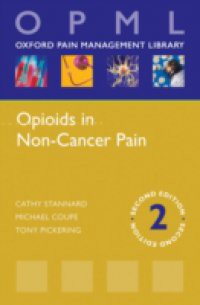Opioids have been used as analgesics for many years, and their use in the management of acute pain related to trauma and surgery is well established. However, patients with persisting pain need a pain management plan that brings relief of symptoms without adverse effects in both the short and longer terms. The prescribing of opioids for chronic non-cancer pain has increased substantially since the first edition of this pocketbook was published, prompting considerable debate regarding the appropriateness of prescribing for this indication and the potential harms to individuals and to society that may result from this trend. This second edition of Opioids in Non-Cancer Pain brings clinicians up to date on the current use of opioid drugs in patients with non-cancer pain, and highlights the potentialbenefits of therapy as well as the problems that can occur. The edition includes new chapters on the history of opioids to help contextualize the following discussions, and a new chapter covering the emerging field of pharmacogenomics which provides explanations for differing responsiveness toopioids and propensity to adverse effects. An international perspective on opioid prescribing trends is also a valuable new addition.

